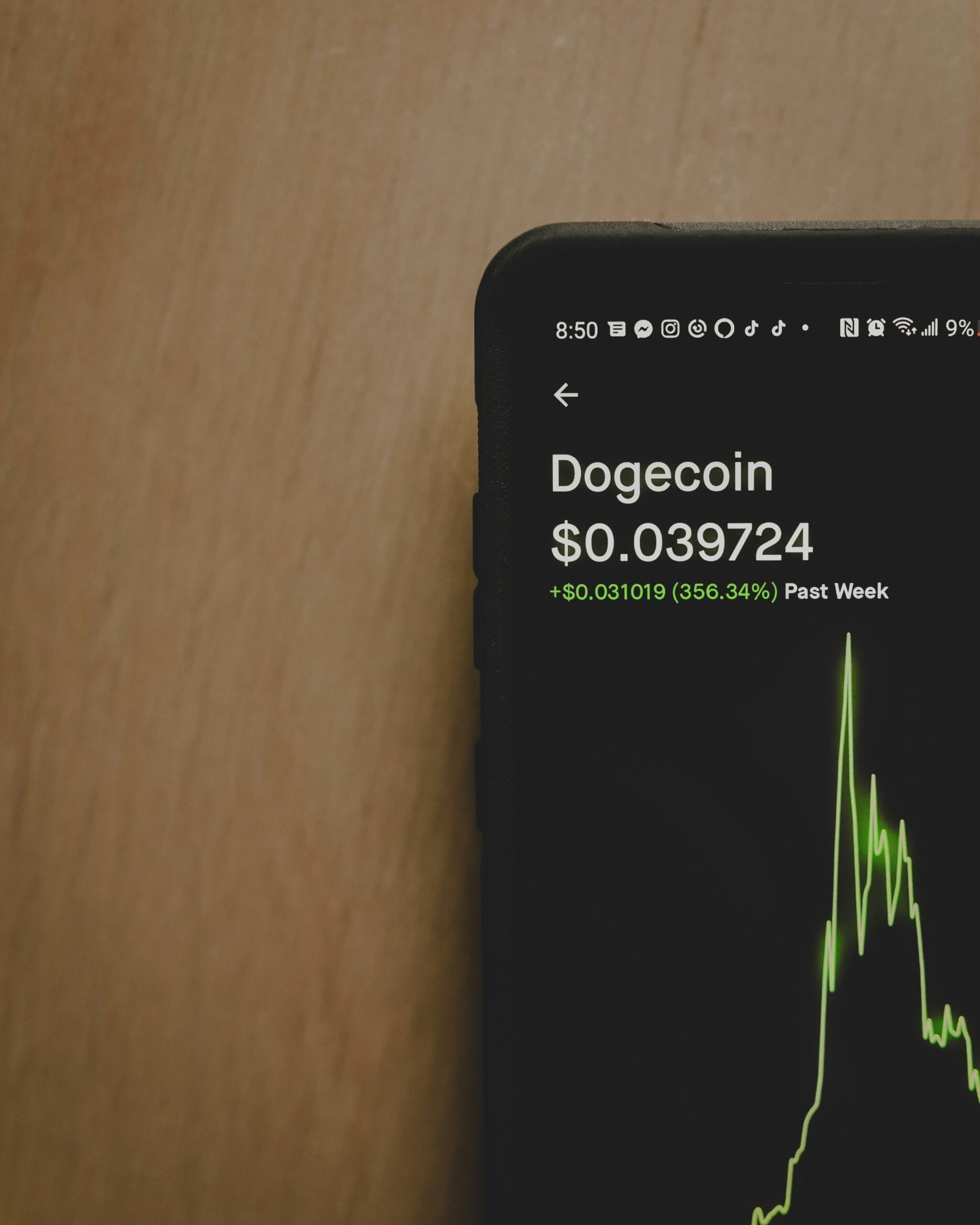Discovering the Best Cryptocurrency Exchange App with High Liquidity
Introduction to Cryptocurrency Exchange Apps
Cryptocurrency exchange apps have emerged as pivotal tools in the digital financial landscape, revolutionizing the way individuals engage with cryptocurrencies. These applications serve as platforms where users can buy, sell, and trade a wide array of digital assets, ranging from well-known cryptocurrencies like Bitcoin and Ethereum to an ever-growing list of altcoins. By offering a streamlined, user-friendly interface, cryptocurrency exchange apps make it accessible for both novice and seasoned traders to participate in the crypto market.
The importance of these apps cannot be overstated. They provide essential services such as real-time market data, secure storage solutions, and seamless transaction processes, thereby ensuring that users can manage their cryptocurrency investments efficiently and effectively. In addition, the high liquidity offered by top-tier exchange apps facilitates smooth trading experiences, reducing the risk of slippage and ensuring that transactions are executed at favorable prices.
As digital currencies gain mainstream acceptance, the demand for reliable and robust cryptocurrency exchange apps has surged. These apps are not only crucial for individual investors but also for institutional players who require sophisticated tools to manage large volumes of transactions. The growing popularity of cryptocurrencies as an asset class has underscored the necessity of having dependable exchange platforms that can handle the complexities of the market while providing top-notch security and compliance with regulatory standards.
In today’s fast-paced digital economy, cryptocurrency exchange apps play a central role in democratizing access to financial services. They enable users from around the globe to partake in the crypto revolution, offering opportunities for investment, wealth generation, and financial inclusion. As technology continues to advance, these apps are expected to evolve, incorporating more innovative features and enhancing user experiences to meet the dynamic needs of the cryptocurrency community.
Understanding Liquidity in Cryptocurrency Exchanges
Liquidity, in the realm of cryptocurrency exchanges, refers to the ease with which an asset can be quickly bought or sold in the market without causing a significant impact on its price. Essentially, high liquidity means there are numerous buy and sell orders in the order book, which facilitates seamless transactions for users. This concept is paramount for traders who seek to execute trades efficiently and at predictable prices.
High liquidity in a cryptocurrency exchange is significant for several reasons. Firstly, it ensures smoother transactions. When an exchange has high liquidity, it means there are ample participants willing to trade at various price points. This reduces the time it takes to match buy and sell orders, thereby enabling traders to execute transactions swiftly.
Secondly, high liquidity plays a crucial role in reducing price volatility. In a highly liquid market, large trades have a minimal impact on the asset’s price. This stability is beneficial for traders, especially those dealing with substantial volumes, as it mitigates the risk of slippage — a scenario where the execution price deviates from the expected price due to insufficient liquidity.
Furthermore, high liquidity allows users to buy and sell assets quickly without experiencing significant price changes. This is particularly important for day traders and scalpers who rely on quick entry and exit points to capitalize on short-term market movements. In a liquid market, these traders can move in and out of positions with ease, ensuring they can achieve their desired profit margins.
In conclusion, understanding liquidity is essential for anyone participating in cryptocurrency trading. It not only ensures efficient and predictable trading but also provides a stable environment conducive to various trading strategies. When choosing a cryptocurrency exchange app, prioritizing one with high liquidity can significantly enhance your trading experience and outcomes.
Key Features of a High Liquidity Exchange App
A high liquidity cryptocurrency exchange app is essential for traders seeking efficient transactions and optimal market conditions. One of the primary features that contribute to high liquidity is a large user base. An extensive network of active users ensures a continuous flow of buy and sell orders, minimizing the time traders spend waiting for their orders to be matched. This robust community engagement is critical for maintaining an active market.
Another pivotal feature is the availability of multiple trading pairs. The more trading pairs an exchange offers, the more opportunities users have to diversify their portfolios and engage in various trading activities. This diversity attracts a broader range of traders, further enhancing the liquidity of the platform. Popular trading pairs often include major cryptocurrencies like Bitcoin, Ethereum, and stablecoins, along with numerous altcoins.
Advanced matching engine technology is also vital for a high liquidity exchange app. This technology ensures that buy and sell orders are executed swiftly and accurately, reducing latency and the risk of slippage. A sophisticated matching engine can handle a high volume of transactions per second, which is crucial during periods of high market volatility.
Deep order books are another essential feature. They reflect the volume of buy and sell orders at various price levels, providing a comprehensive view of the market depth. Deep order books allow traders to execute large orders without significantly impacting the market price, which is a critical aspect of maintaining liquidity.
Lastly, integration with other exchanges or liquidity providers can significantly boost an exchange app’s liquidity. By connecting with external sources of liquidity, an exchange can offer users access to a larger pool of assets and trading opportunities. This integration ensures that users can always find counterparties for their trades, even in less popular markets.
Incorporating these key features ensures that a cryptocurrency exchange app provides a high liquidity environment, benefiting both casual traders and professional investors.
Benefits of Using a High Liquidity Exchange App
Utilizing a cryptocurrency exchange app with high liquidity offers a plethora of advantages that can significantly enhance the trading experience for both retail and institutional traders. One of the primary benefits is the presence of lower spreads. High liquidity ensures that the gap between the buy and sell price is minimal, allowing traders to execute transactions at more favorable rates. This reduction in spreads not only saves money but also increases the potential for profitable trades.
Another critical advantage is faster execution of trades. In a liquid market, there are numerous buyers and sellers available at any given time, which means that orders are filled almost instantaneously. This rapid execution minimizes the risk of price changes between the time an order is placed and when it is executed. Consequently, traders can capitalize on market opportunities more effectively without the fear of significant delays.
Reduced slippage is another notable benefit of high liquidity. Slippage occurs when an order is executed at a different price than expected, usually due to insufficient market activity. High liquidity mitigates this risk by ensuring that there are enough participants to match orders at the desired price points, thus providing more predictable and stable trading outcomes.
Price stability is also enhanced in a highly liquid exchange app. When there is substantial market participation, the impact of large orders on the overall price is diminished, leading to more stable and less volatile price movements. This stability is particularly beneficial for traders who rely on technical analysis, as it provides a more reliable foundation for making informed decisions.
Lastly, high liquidity presents enhanced trading opportunities. Both retail and institutional traders can engage in more complex trading strategies, such as arbitrage or high-frequency trading, without the constraint of limited market activity. The availability of ample liquidity ensures that even large orders can be executed seamlessly, enabling traders to explore and exploit various market conditions.
Popular High Liquidity Cryptocurrency Exchange Apps
When it comes to selecting a cryptocurrency exchange app with high liquidity, several platforms stand out due to their vast user base, impressive trading volumes, and unique features. Below, we explore some of the most popular and reliable options available in the market.
Binance
Binance is often heralded as one of the top cryptocurrency exchange apps, boasting a user base exceeding 28 million users globally. The platform is renowned for its high liquidity, with daily trading volumes frequently surpassing $30 billion. Binance offers an extensive range of cryptocurrencies, advanced trading tools, and a user-friendly interface. Notably, Binance has received accolades such as the “Best Cryptocurrency Exchange” at the 2019 Asia Blockchain Awards.
Coinbase Pro
Coinbase Pro is another prime choice for traders seeking high liquidity. With over 56 million verified users, Coinbase Pro consistently ranks among the top exchanges in terms of daily trading volumes. The platform is known for its robust security measures, ease of use, and comprehensive educational resources. Coinbase Pro has garnered recognition from industry experts, including being named “Best Cryptocurrency Exchange” by Investopedia in 2021.
Kraken
Kraken is a veteran in the cryptocurrency exchange landscape, serving millions of users since its inception in 2011. It is particularly favored for its high liquidity in both fiat and cryptocurrency pairs. Kraken’s daily trading volumes regularly reach billions of dollars, and the platform is praised for its strong security protocols and wide array of supported assets. Kraken has been awarded “Best Exchange for Security” by Cryptocompare in 2019.
Bitfinex
Bitfinex is recognized for its substantial trading volumes and deep liquidity pools. The exchange caters to both individual and institutional traders, offering a comprehensive suite of trading tools and features. Bitfinex’s daily trading volumes are consistently high, ensuring liquidity for a range of trading pairs. The platform has also been acknowledged for its transparency and reliability, receiving positive reviews from industry analysts.
These cryptocurrency exchange apps provide high liquidity, making them ideal for traders seeking efficient and reliable trading experiences. Each platform offers unique features and has earned industry recognition, ensuring they remain at the forefront of the cryptocurrency exchange market.
How to Evaluate Liquidity Before Choosing an Exchange App
Assessing the liquidity of a cryptocurrency exchange app is crucial for ensuring smooth and effective trading. High liquidity indicates that assets can be quickly bought or sold without causing significant price fluctuations. Here are key metrics and indicators to consider when evaluating the liquidity of an exchange app:
Trading Volume: The most direct measure of an exchange’s liquidity is its trading volume. High trading volumes typically indicate a large number of active traders and frequent transactions, which contribute to easier and faster execution of trades. It’s advisable to check the 24-hour trading volume of the exchange for a comprehensive understanding of its liquidity levels.
Order Book Depth: Another essential metric is the order book depth, which shows the number of open buy and sell orders at various price levels. A deep order book with numerous orders at various prices signifies robust liquidity. When the order book is deep, large trades can be executed without causing substantial price movements.
Spread: The spread, which is the difference between the highest buy order and the lowest sell order, serves as an indicator of liquidity. Narrow spreads suggest that the market is competitive, and there is sufficient activity to facilitate trades at fair prices. Conversely, wide spreads might indicate lower liquidity, leading to potential inefficiencies in trade execution.
User Reviews: While quantitative metrics are vital, qualitative insights from user reviews can also provide valuable information about an exchange’s liquidity. Users often share their experiences regarding the ease of trading, the speed of executing orders, and any challenges they faced. Positive reviews can reinforce the perception of high liquidity, while negative feedback might highlight potential issues.
By considering these metrics and indicators, users can make informed decisions when selecting a cryptocurrency exchange app with high liquidity. This ensures a more efficient and seamless trading experience, allowing for effective management of their cryptocurrency assets.
Challenges and Risks Associated with Low Liquidity
Navigating the realm of cryptocurrency exchange apps presents various challenges, especially when dealing with platforms characterized by low liquidity. One of the most pronounced issues is the presence of higher spreads. In financial markets, the spread refers to the difference between the bid and ask prices. Low liquidity often results in wider spreads, meaning traders might end up paying more to buy or receiving less when they sell, which can significantly erode profits over time.
Another critical risk associated with low liquidity is increased slippage. Slippage occurs when a trade is executed at a price different from the one expected, usually due to insufficient volume to maintain the anticipated price level. This discrepancy can be particularly problematic for large trades, where the lack of counterparties can lead to unfavorable price movements. Consequently, traders might find it challenging to secure their desired entry and exit points, impacting their overall strategy and profitability.
Difficulty in executing large trades is another notable risk. In a low liquidity environment, finding enough buyers or sellers at a particular price point can be a daunting task. Large orders may need to be broken down into smaller ones, potentially leading to partial fills at varying prices. This fragmentation can disrupt planned trades and result in substantial losses, especially in volatile markets.
The overall impact on trading strategies and profitability cannot be understated. Low liquidity can hinder the effectiveness of certain trading strategies, such as scalping or high-frequency trading, which rely on swift execution and minimal price differences. Furthermore, the unpredictability of price movements in low liquidity environments can introduce a higher level of risk and uncertainty, making it difficult for traders to achieve consistent results.
In summary, while low liquidity in cryptocurrency exchange apps may present opportunities, it is fraught with substantial risks. Traders must be mindful of higher spreads, increased slippage, and challenges in executing large trades, as these factors can have a profound effect on their trading strategies and overall profitability.
Future Trends in Cryptocurrency Exchange Liquidity
The landscape of cryptocurrency exchange liquidity is poised for significant evolution, driven by emerging technologies and regulatory shifts. One of the most transformative trends is the rise of decentralized exchanges (DEXs). Unlike traditional centralized exchanges, DEXs operate without a central authority, leveraging blockchain technology to facilitate peer-to-peer trading. This model inherently enhances liquidity by allowing users to trade directly from their wallets, minimizing the risk of centralized control and single points of failure.
Another promising innovation is liquidity mining, which incentivizes users to provide liquidity to the trading pairs on an exchange. By offering rewards, often in the form of native tokens, liquidity mining encourages a more robust and dynamic pool of assets available for trading. This not only increases the overall liquidity but also fosters a more engaged and participatory trading community.
Cross-chain trading solutions are also gaining traction as a means to enhance liquidity. These solutions enable the transfer and trading of assets across different blockchain networks, breaking down the silos that currently fragment the crypto market. Technologies such as atomic swaps and blockchain interoperability protocols are paving the way for seamless cross-chain transactions, thus expanding the available liquidity pools.
Regulatory impacts will also play a crucial role in shaping the future of cryptocurrency exchange liquidity. As more jurisdictions develop and implement comprehensive regulatory frameworks for cryptocurrency trading, the increased transparency and security could attract more institutional investors. This influx of capital would significantly boost liquidity and bring greater stability to the market.
Furthermore, advancements in artificial intelligence and machine learning are expected to optimize liquidity management. These technologies can analyze vast amounts of trading data in real-time, predicting market movements and adjusting liquidity provision accordingly. This level of sophistication could lead to more efficient and responsive trading environments.
Overall, the future of cryptocurrency exchange liquidity looks promising, driven by technological innovations and regulatory advancements. As these elements converge, they will likely create a more liquid, stable, and accessible trading ecosystem.






